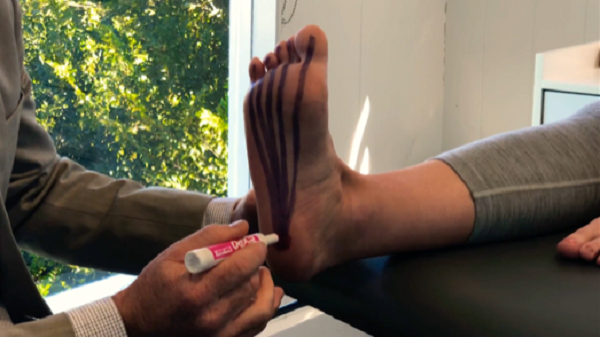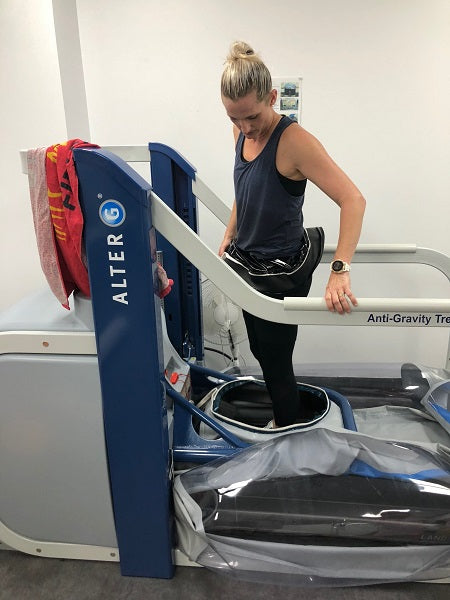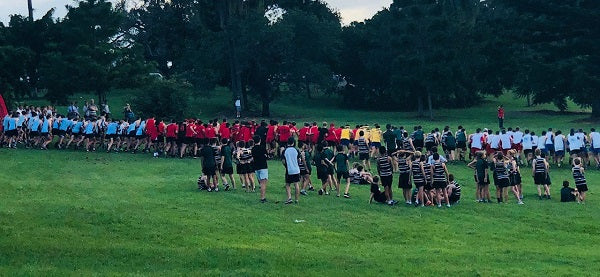Plantar fasciitis often strikes at the most inconvenient time. Many of our patients are getting back into their fitness or increasing their mileage in preparation for an event and this extra activity results in too much strain through the plantar fascia.
Almost all cases are 'cumulative injuries' where an accumulation of stretching under the arch leads to tearing of the plantar fascia itself or where it joins into the bone. I have written some more in depth information on diagnosing, explaining and treating plantar fasciitis on our webpage that you can find by clicking here.
5 critical ways to reduce strain on the injured plantar fascia
To allow healing, the strain through the injured and weak plantar fascia needs to be reduced. An important part of treating plantar fasciitis is to reduce the strain on the plantar fascia by using these tips.
1. Footwear

Stiff shanked shoes that have the correct support matched to your foot will reduce the bending and load through the plantar fascia. If you can't make it to our shop/clinic to get the perfect advice, try the Brooks Adrenaline/Asics GT2000/Mizuno Horizon/Nike Structure for feet that roll in.
Make sure you have supportive shoes on your feet even when you aren't training as the accumulation of the load and strain all adds up to tearing the plantar fascia. For when you refuse to wear joggers, these Archies Thongs are great for around home or alternatively the Birkenstock/Orthaheel Thongs.
2. Strapping Tape

Rigid strapping tape (not flexible Kinesio or Rocktape) applied the correct way can really reduce the strain. I have a video on our webpage of how to strap the bottom of the foot to really reduce the strain using specific techniques that can be found here
Strapping the foot every day will really reduce the strain overall, however some patients only strap for their training sessions.
3. Custom made Orthotics

Orthotics are 3d inserts made exactly for your foot that have specific angles and design elements to change how your foot is working. An orthotic designed to reduce the strain through the plantar fascia is ideal.
The orthotic needs to be super comfortable so that you totally forget about it within a few days. If it isn't comfortable, it can actually aggravate this problem. More info on how we make our soft 3D laser scanned orthotics here.
4. Loosen Tight Muscles and Tendons

Tight calves, soleus and achilles tendons add extra strain and tension through the plantar fascia. Loosening these with a physiotherapist or by massage, foam rolling, stretching or trigger points is beneficial.
5. Change the Way You Train

Before you throw in the towel and quit altogether, there are some simple adjustments that can be made to the way you train. Try and replace longer runs with shorter tempo runs and avoid hill sprints where you are up on the forefoot. Injured plantar fascias seem to handle the intervals better.
If you do need to get a really long walk or run done, you can split it in half and still get the total mileage done that day or over the weekend. It is a far better alternative to cancelling altogether and the training benefits will be almost the same.
Get Everything in Place
Injured plantar fascias don't have much blood flow to them, so they take a lot longer to heal back to full strength compared to muscles or even tendons. Reducing the load with the above tips to allow this gradual healing is important. Once healing and re-strengthening has commenced, the load can be gradually increased back to normal.
If you need more advice with treating this common, but difficult foot problem, book in to see one of our Brisbane Sports Podiatrists by clicking here


